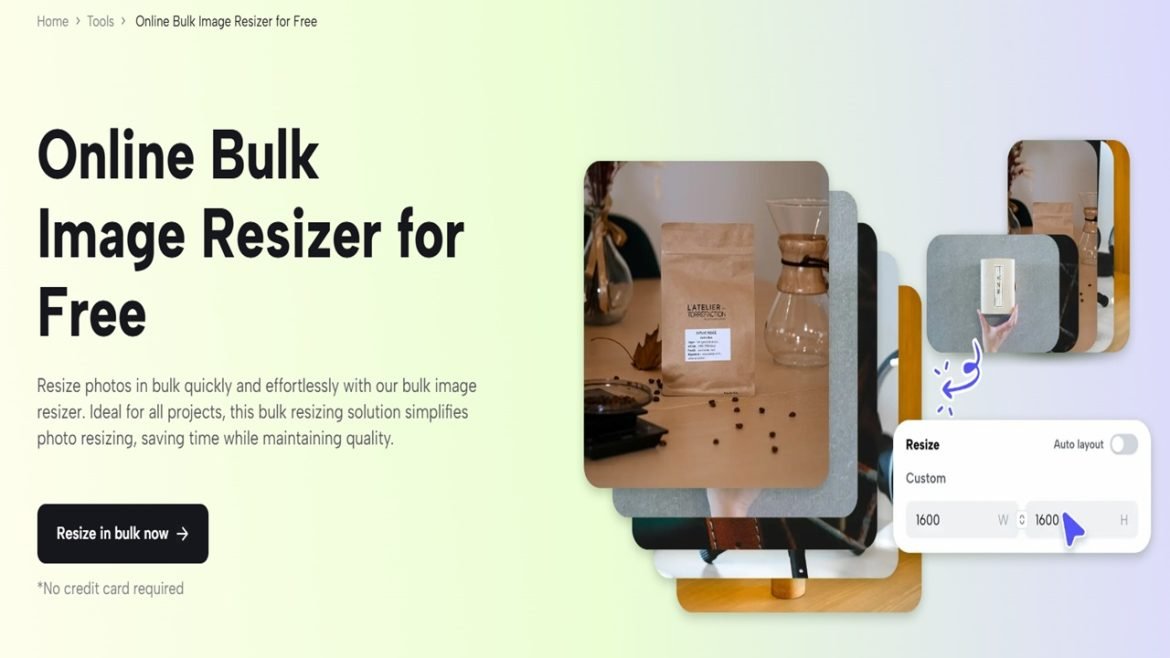The fast digital world creates substantial pressure for professional photographers and studios to provide high-quality images at high speed and large volume. Manual resizing of each photo has become impractical when preparing wedding galleries, real‑estate portfolios, and extensive product shoots. The bulk image resizer from Pippit AI helps photographers resize large image collections at high speed, without compromising their quality.
Why Bulk Resizing Matters for Photographers
Photographers handle large numbers of high‑resolution RAW or TIFF files that exceed 20 MB in size each. The process of sharing image files through client galleries, social media, and website portfolios demands proper dimension and file size optimization. Bulk resizing ensures:
- A uniform presentation style with standardized dimensions throughout galleries eliminates layout problems that occur from awkward cropping.
- The delivery speed improves because optimized files transfer at a faster rate, which leads to better client satisfaction.
- Search Engine Optimization benefits from image optimization because it enhances page loading speed, which results in better search rankings and user engagement.
- Manual resizing takes up valuable hours that photographers should dedicate to shooting and editing tasks. The Pippit AI system combines quick processing with absolute image quality to solve this time-consuming workflow issue.
Essential Features
Custom Dimension Presets
Pippit AI provides preconfigured aspect ratios for 4:3, 16:9, square, and device-specific dimensions for Instagram feed, Facebook cover, and website hero. The tool lets photographers create specific width and height measurements, which help fulfill platform and client specifications.
Intelligent Upscaling and Downscaling
The process of traditional resizing leads to detail loss during enlargement and causes sharpness reduction during shrinking operations. Pippit AI utilizes advanced interpolation techniques and neural‑net enhancement to preserve edge definition, color accuracy, and overall clarity when users scale images to dimensions larger than their original size.
Format Conversion
Pippit AI’s batch editor performs automatic format conversions alongside resizing operations so users can produce JPEGs for web galleries, PNGs for print proofs, and WebP for fast loading. The tool eliminates the need for additional conversion steps and automatically maintains all metadata, including EXIF and GPS information.
Automated Sharpening and Noise Reduction
The reduction of image size causes fine details to appear blurry. The context-aware sharpening feature of Pippit AI maintains image texture, and users can enable optional noise-reduction filters to improve low-light pictures. The batch-wide enhancements function as a single cohesive application method.
Cloud‑Based Speed and Scalability
The cloud computing power of Pippit AI allows it to process big data sets simultaneously, which shortens processing times from hours to just minutes. The platform allows photographers to upload 50 images simultaneously and schedule additional batch processing during nighttime hours, which suits studio operations.
Bulk Resizing Workflow: Log in and Launch Image Studio
Users can access Pippit’s dashboard to reach Image Studio through the interface. Starting a new resize job requires users to click the Batch Edit button.
- The system allows users to submit their RAW or High-Res files.
- To drag and drop up to 50 files directly from your local drive or cloud storage. The Pippit AI system accepts RAW (CR2, NEF, ARW), TIFF, JPEG, PNG, BMP, and WebP image file types.
Select Resize Preset or Enter Custom Dimensions
Users can select from pre-set options or manually define width, height, and aspect ratio. You can check your settings by previewing the sample thumbnails.
Configure Enhancements (Optional)
Toggle Smart Sharpen and Noise Reduction for consistent output. Set the output format to JPEG, PNG, GIF, or WebP while selecting the quality level.
Process and Download
Click Resize All. Pippit AI’s cloud engine executes the job in seconds. After processing, the batch ZIP file becomes available for download, or you can save it directly to your cloud storage.
Best Practices to Maintain Quality
The following steps will help achieve the best possible output quality during bulk resizing operations:
- Lock aspect ratio in all cases to stop key subjects from becoming distorted.
- A small test with representative images should be run to optimize noise reduction and sharpening parameters through the Test Presets feature.
- Check the file size against quality levels to achieve optimal load times while maintaining JPEG quality between 80–90%.
- Archived files should maintain their EXIF metadata and GPS information, which helps with preservation and search engine optimization.
- The implementation of these guidelines helps your resized galleries maintain the visual quality of your initial photographs.
Conclusion
Bulk resizing maintains image quality at all times. Through Pippit AI, photographers can efficiently process their high-resolution files in bulk operations without compromising image quality, metadata details, or sharpness. Modern photography professionals depend on Pippit AI because its intelligent upscaling, batch automation, and cloud scalability features create an essential workflow solution.
